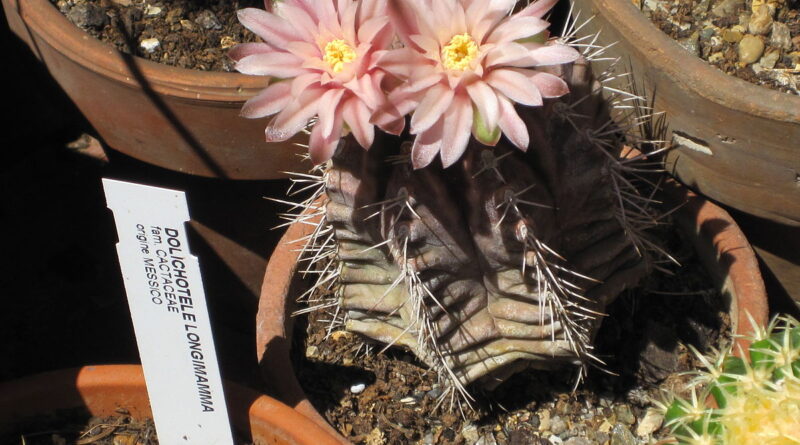Gymnocalycium cactus
Introduction
Gymnocalycium cactus is a genus of cacti that contains about 80 species. The genus name is derived from the Greek word gymnos, meaning “naked,” and kalyx, meaning “box.” The genus Gymnocalycium was first described in 1810 by German naturalist Samuel Frederick Gray. Two species of gymnocalycium are readily grown as houseplants.
Those two species, G. smithii and G. polyphyllum, are the most commonly grown cacti in greenhouses and backyard gardens.[/l] A third species, G. stefanopodum, grows outdoors only in part of southern Mexico.[/l] All three species bloom sporadically for a few weeks in springtime and again in fall when temperatures are lower than 60 degrees Fahrenheit (16 degrees Celsius
Gymnocalycium cactus is a genus of cacti that contains about 80 species.
Gymnocalycium cactus is a genus of cacti that contains about 80 species. The name derives from the Greek “gymnos,” which means “naked,” and “calyx,” which means “head” or “cap.”
The genus Gymnocalycium is endemic to the southwestern United States, northern Mexico and South Africa. Some species have been introduced to gardens in Germany and South Africa, but these are not true members of this group; they belong to other genera such as Solanum or Opuntia
The genus name is derived from the Greek word gymnos, meaning “naked,” and kalyx, meaning “box.”
The genus name is derived from the Greek word gymnos, meaning “naked,” and kalyx, meaning “box.” The cactus species in the Gymnocalycium genus are native to South America, Central America and Mexico.
The genus Gymnocalycium was first described in 1810 by German naturalist Samuel Frederick Gray.
Gymnocalycium cactus is a genus of cacti that contains about 80 species. The genus name is derived from the Greek word gymnos, meaning “naked,” and kalyx, meaning “box.”
The most common form of Gymnocalycium is known as Pereskia or Pygidophile (from Greek pygeios, “foolish” and philein, to love). Its flowers have five petals each with a yellow center at their base.
Two species of gymnocalycium are readily grown as houseplants. Those two species, G. smithii and G. polyphyllum, are the most commonly grown cacti in greenhouses and backyard gardens.
Two species of gymnocalycium are readily grown as houseplants. Those two species, G. smithii and G. polyphyllum, are the most commonly grown cacti in greenhouses and backyard gardens.
The genus name is derived from the Greek word gymnos (naked), meaning “naked,” and kalyx (box), meaning “box.”
A third species, G. stefanopodum, grows outdoors only in part of southern Mexico.
A third species, G. stefanopodum, grows outdoors only in part of southern Mexico. It has the same leaf shape as its congeners but a different flower color and growth habit. This cactus is a fast-growing plant that can be grown indoors or outdoors.
All three species bloom sporadically for a few weeks in springtime and again in fall when temperatures are lower than 60 degrees Fahrenheit (16 degrees Celsius).
The genus Gymnocalycium contains about 80 species, with most being found in the Andes Mountains of South America. The name is derived from the Greek word gymnos, meaning “naked,” and kalyx, meaning “box.”
The three species of Gymnocalycium are very similar in appearance. They have rosettes or clumps of white spines that grow from a central stem. The leaves are light greenish-to-yellowish in color and can be up to 2 inches (5 cm) long by 1 inch (2.5 cm) wide; they are arranged spirally around their stems like petals on a flower bud.
Found in southwestern United States and northern Mexico, some species have been introduced to gardens in Germany and South Africa
Gymnocalycium cactus is a genus of cacti that contains about 80 species. They are native to southwestern United States and northern Mexico, but have been introduced to gardens in Germany and South Africa.
The word “gymnos” means naked or exposed; it also refers to the navel of an animal, which can be thought as its center or heart (hence the origin of “gym”). The name “kalyx” means box; it was given because these plants often grow on bare rock outcrops with little else around them except space for growth.
Conclusion
In conclusion, I would like to say that Gymnocalycium cactus is a genus of cacti that contains about 80 species. The genus name is derived from the Greek word gymnos, meaning “naked,” and kalyx, meaning “box.” All three species bloom sporadically for a few weeks in springtime and again in fall when temperatures are lower than 60 degrees Fahrenheit (16 degrees Celsius). A third species, G. stefanopodum, grows outdoors only in part of southern Mexico. Found in southwestern United States and northern Mexico

